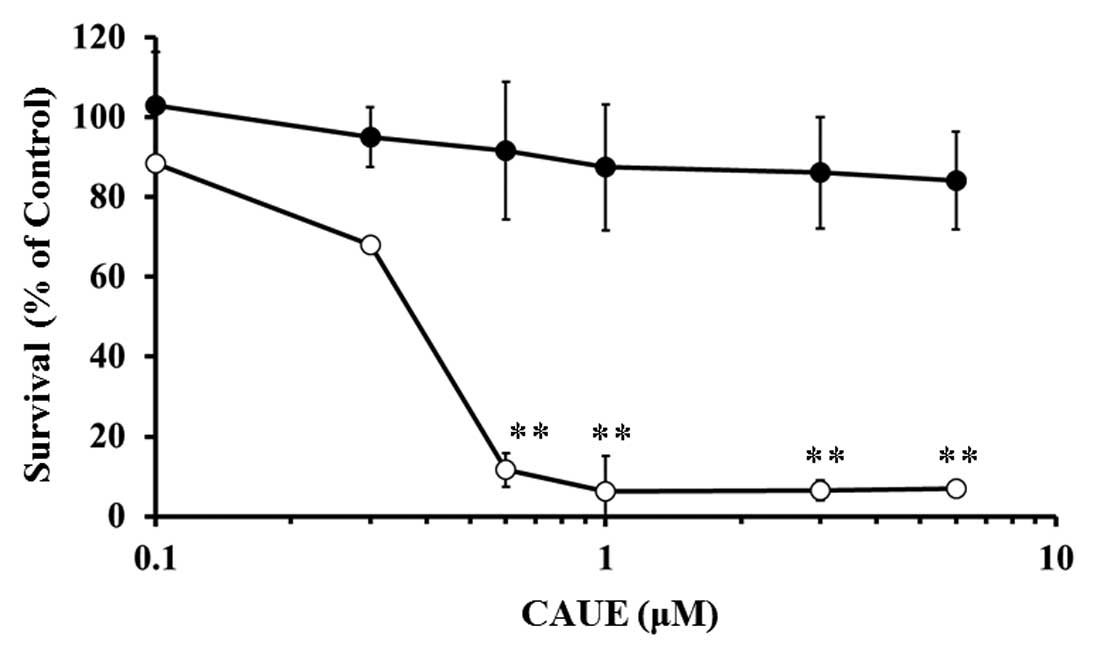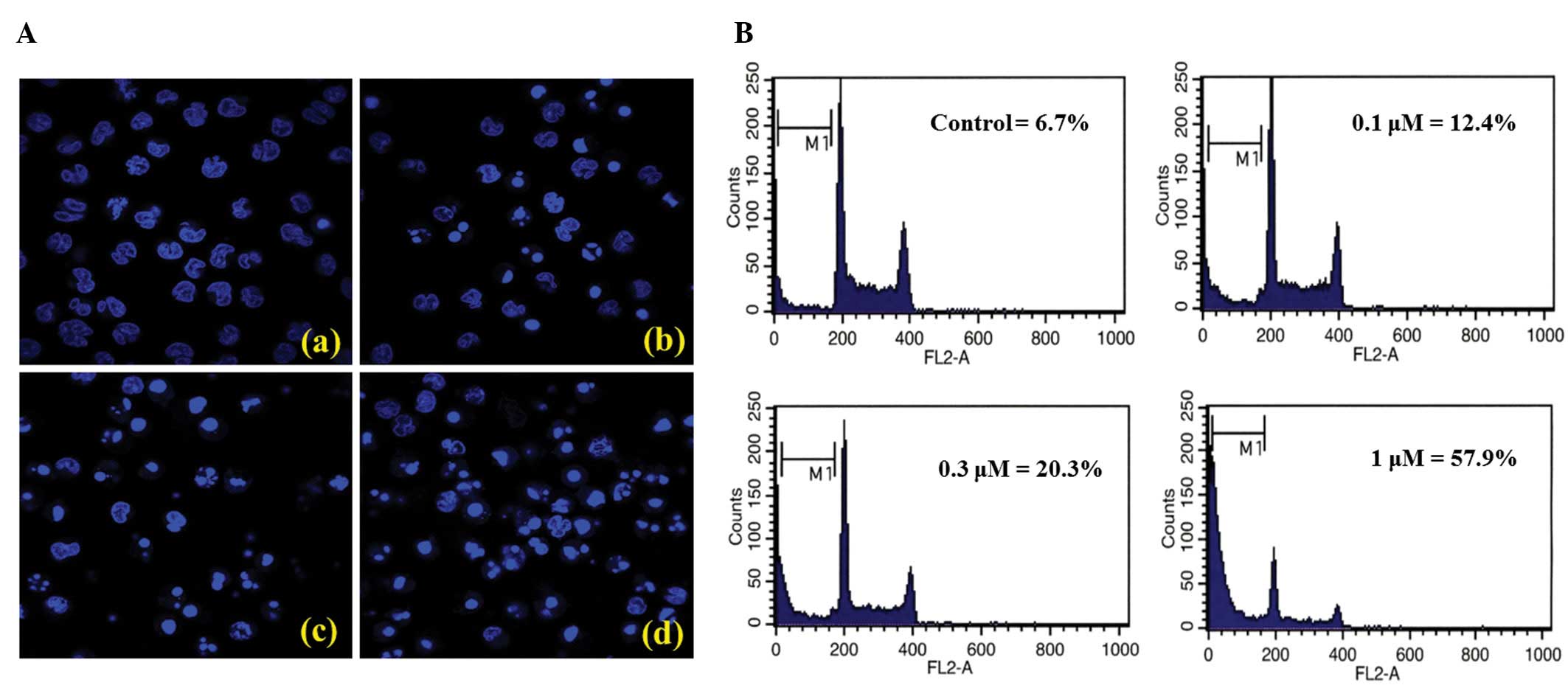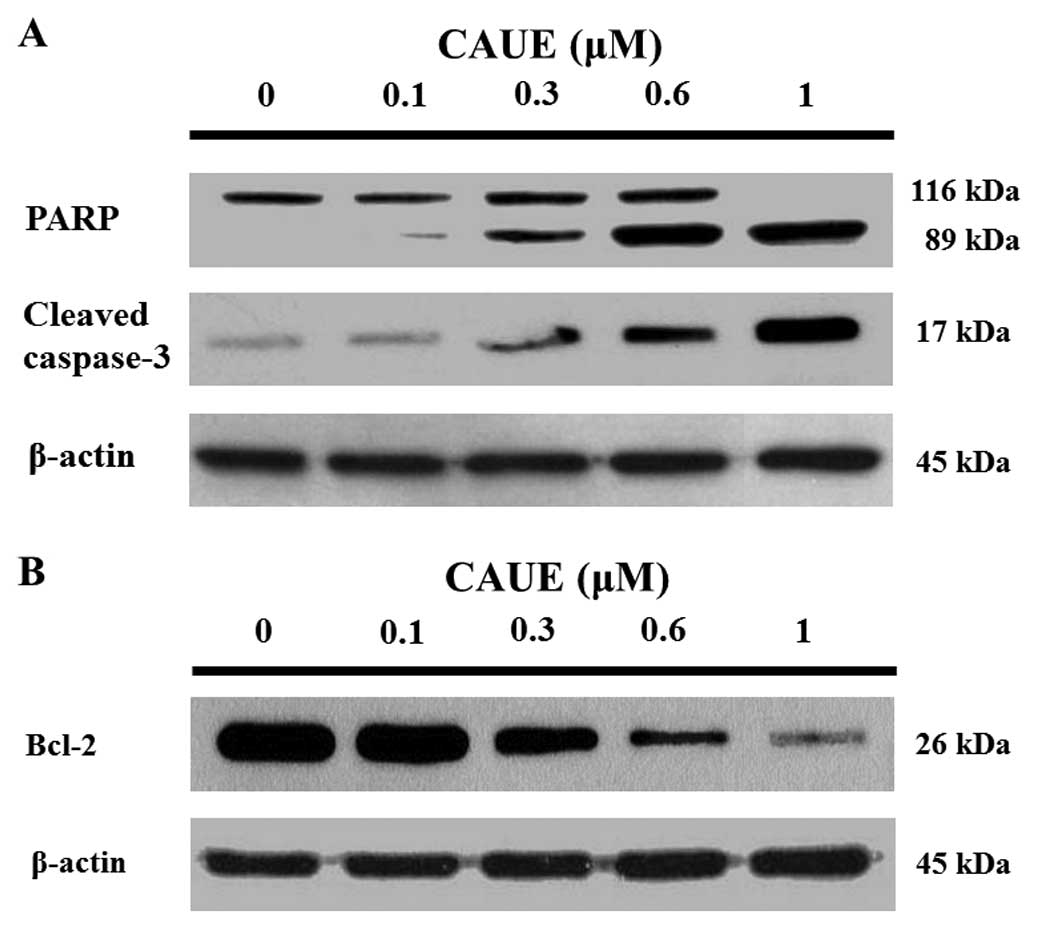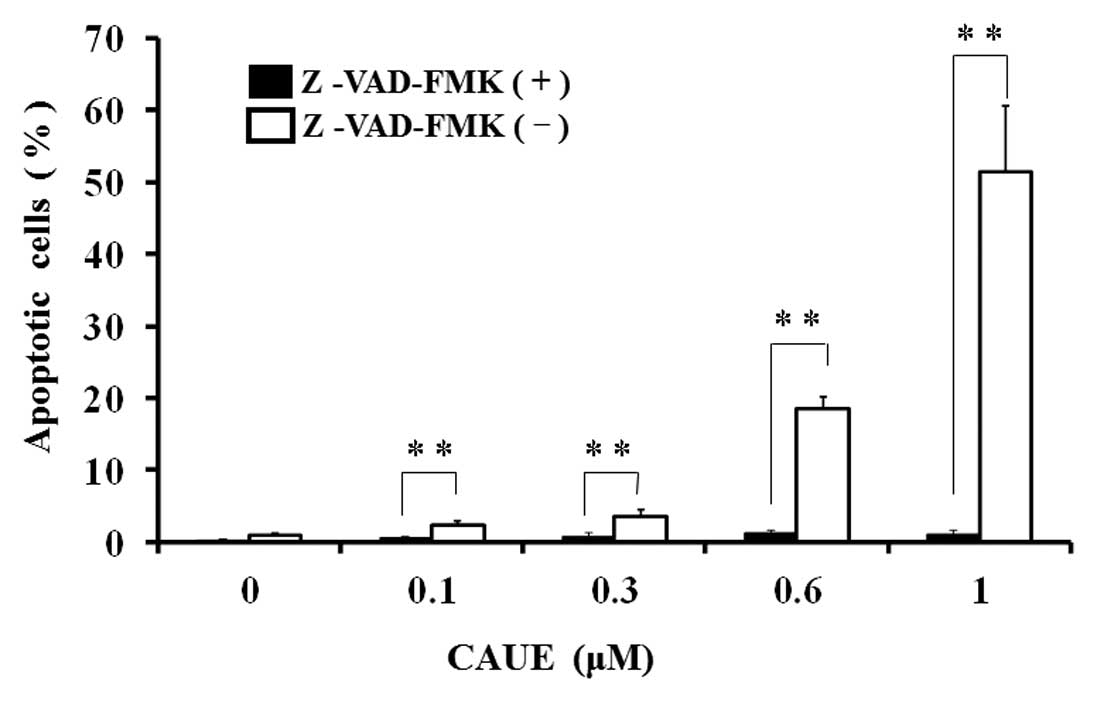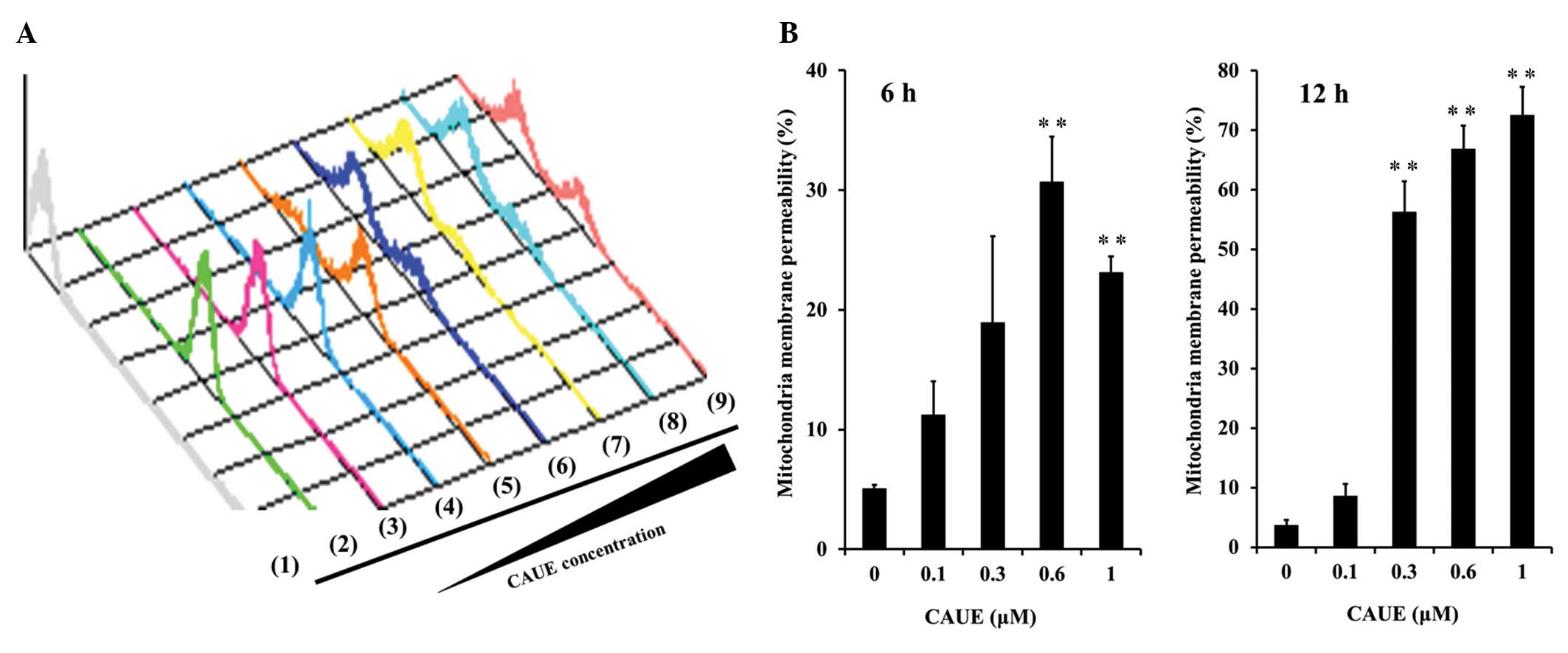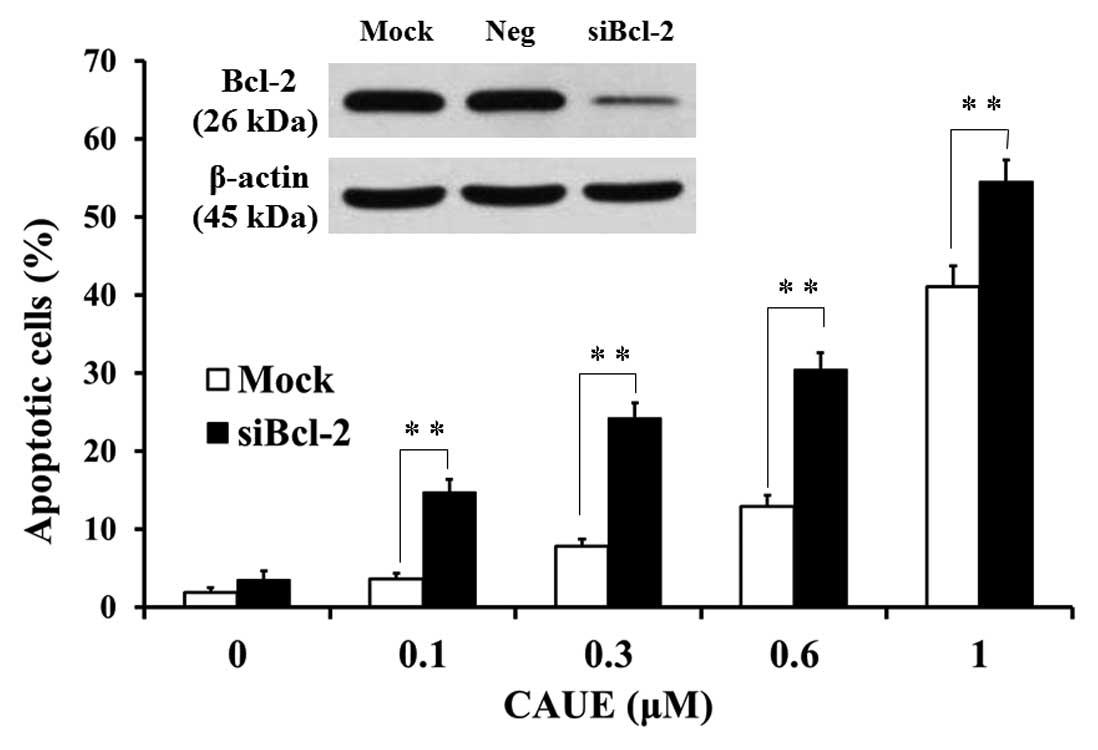|
1
|
Banskota AH, Tezuka Y, Midorikawa K,
Matsushige K and Kadota S: Two novel cytotoxic benzofuran
derivatives from Brazilian propolis. J Nat Prod. 63:1277–1279.
2000. View Article : Google Scholar : PubMed/NCBI
|
|
2
|
Burdock GA: Review of the biological
properties and toxicity of bee propolis (propolis). Food Chem
Toxicol. 36:347–363. 1998. View Article : Google Scholar : PubMed/NCBI
|
|
3
|
Banskota AH, Nagaoka T, Sumioka LY, et al:
Antiproliferative activity of the Netherlands propolis and its
active principles in cancer cell lines. J Ethnopharmacol. 80:67–73.
2002. View Article : Google Scholar : PubMed/NCBI
|
|
4
|
Watanabe MA, Amarante MK, Conti BJ and
Sforcin JM: Cytotoxic constituents of propolis inducing anticancer
effects: a review. J Pharm Pharmacol. 63:1378–1386. 2011.
View Article : Google Scholar : PubMed/NCBI
|
|
5
|
Lee YJ, Kuo HC, Chu CY, Wang CJ, Lin WC
and Tseng TH: Involvement of tumor suppressor protein p53 and p38
MAPK in caffeic acid phenethyl ester-induced apoptosis of C6 glioma
cells. Biochem Pharmacol. 66:2281–2289. 2003. View Article : Google Scholar : PubMed/NCBI
|
|
6
|
Jin UH, Song KH, Motomura M, et al:
Caffeic acid phenethyl ester induces mitochondria-mediated
apoptosis in human myeloid leukemia U937 cells. Mol Cell Biochem.
310:43–48. 2008. View Article : Google Scholar : PubMed/NCBI
|
|
7
|
Gupta S, Kass GE, Szegezdi E and Joseph B:
The mitochondrial death pathway: a promising therapeutic target in
diseases. J Cell Mol Med. 13:1004–1033. 2009. View Article : Google Scholar : PubMed/NCBI
|
|
8
|
Kim R, Emi M, Tanabe K and Toge T:
Therapeutic potential of antisense Bcl-2 as a chemosensitizer for
cancer therapy. Cancer. 101:2491–2502. 2004. View Article : Google Scholar : PubMed/NCBI
|
|
9
|
Ujibe M, Kanno S, Osanai Y, et al:
Octylcaffeate induced apoptosis in human leukemia U937 cells. Biol
Pharm Bull. 28:2338–2341. 2005. View Article : Google Scholar : PubMed/NCBI
|
|
10
|
Uwai K, Osanai Y, Imaizumi T, Kanno S,
Takeshita M and Ishikawa M: Inhibitory effect of the alkyl side
chain of caffeic acid analogues on lipopolysaccharide-induced
nitric oxide production in RAW264.7 macrophages. Bioorg Med Chem.
16:7795–7803. 2008. View Article : Google Scholar : PubMed/NCBI
|
|
11
|
Kanno S, Maeda N, Tomizawa A, Yomogida S,
Katoh T and Ishikawa M: Involvement of p21waf1/cip1
expression in the cytotoxicity of the potent histone deacetylase
inhibitor spiruchostatin B towards susceptible NALM-6 human B cell
leukemia cells. Int J Oncol. 40:1391–1396. 2012.
|
|
12
|
Watanabe K, Kanno S, Tomizawa A, Yomogida
S and Ishikawa M: Acacetin induces apoptosis in human T cell
leukemia Jurkat cells via activation of a caspase cascade. Oncol
Rep. 27:204–209. 2012.PubMed/NCBI
|
|
13
|
Kanno S, Higurashi A, Watanabe Y, Shouji
A, Asou K and Ishikawa M: Susceptibility to cytosine arabinoside
(Ara-C)-induced cytotoxicity in human leukemia cell lines. Toxicol
Lett. 152:149–158. 2004.PubMed/NCBI
|
|
14
|
Cortelazzo S, Ponzoni M, Ferreri AJ and
Hoelzer D: Lymphoblastic lymphoma. Crit Rev Oncol Hematol.
79:330–343. 2011. View Article : Google Scholar
|
|
15
|
Hurwitz R, Hozier J, LeBien T, et al:
Characterization of a leukemic cell line of the pre-B phenotype.
Int J Cancer. 23:174–180. 1979. View Article : Google Scholar : PubMed/NCBI
|
|
16
|
Grunberger D, Banerjee R, Eisinger K, et
al: Preferential cytotoxicity on tumor cells by caffeic acid
phenethyl ester isolated from propolis. Experientia. 44:230–232.
1988. View Article : Google Scholar : PubMed/NCBI
|
|
17
|
Najafi MF, Vahedy F, Seyyedin M,
Jomehzadeh HR and Bozary K: Effect of the water extracts of
propolis on stimulation and inhibition of different cells.
Cytotechnology. 54:49–56. 2007. View Article : Google Scholar : PubMed/NCBI
|
|
18
|
Kaufmann SH and Vaux DL: Alterations in
the apoptotic machinery and their potential role in anticancer drug
resistance. Oncogene. 22:7414–7430. 2003. View Article : Google Scholar : PubMed/NCBI
|
|
19
|
Boatright KM and Salvesen GS: Mechanisms
of caspase activation. Curr Opin Cell Biol. 15:725–731. 2003.
View Article : Google Scholar : PubMed/NCBI
|
|
20
|
Satoh MS and Lindahl T: Role of
poly(ADP-ribose) formation in DNA repair. Nature. 356:356–358.
1992. View
Article : Google Scholar : PubMed/NCBI
|
|
21
|
Tewari M, Quan LT, O’Rourke K, et al:
Yama/CPP32 beta, a mammalian homolog of CED-3, is a
CrmA-inhibitable protease that cleaves the death substrate
poly(ADP-ribose) polymerase. Cell. 81:801–809. 1995. View Article : Google Scholar : PubMed/NCBI
|
|
22
|
Cheson BD: Oblimersen for the treatment of
patients with chronic lymphocytic leukemia. Ther Clin Risk Manag.
3:855–870. 2007.PubMed/NCBI
|
|
23
|
Vogler M, Dinsdale D, Dyer MJ and Cohen
GM: Bcl-2 inhibitors: small molecules with a big impact on cancer
therapy. Cell Death Differ. 16:360–367. 2009. View Article : Google Scholar : PubMed/NCBI
|



